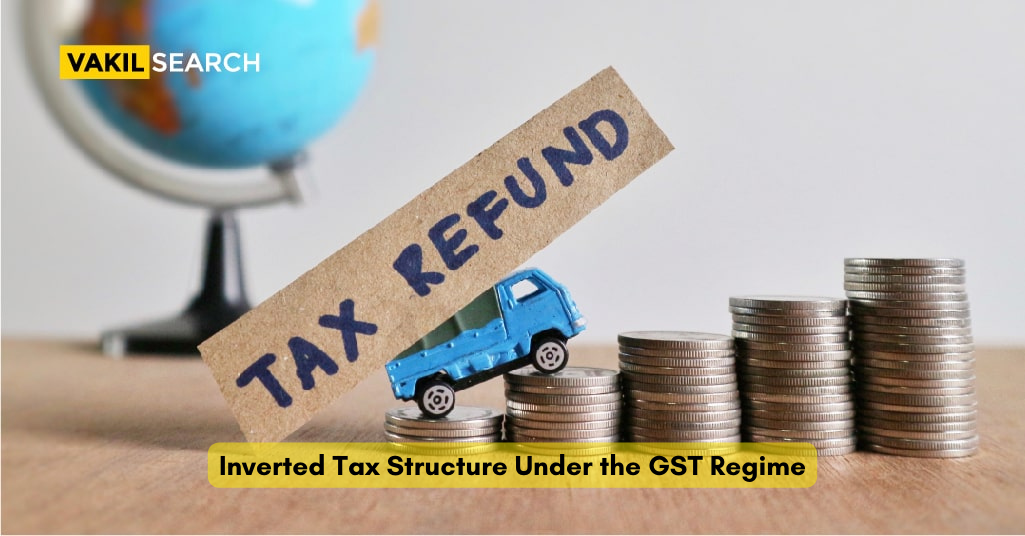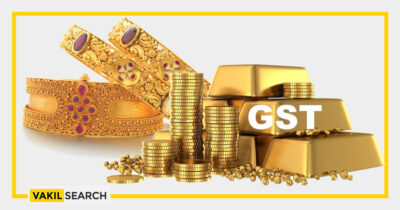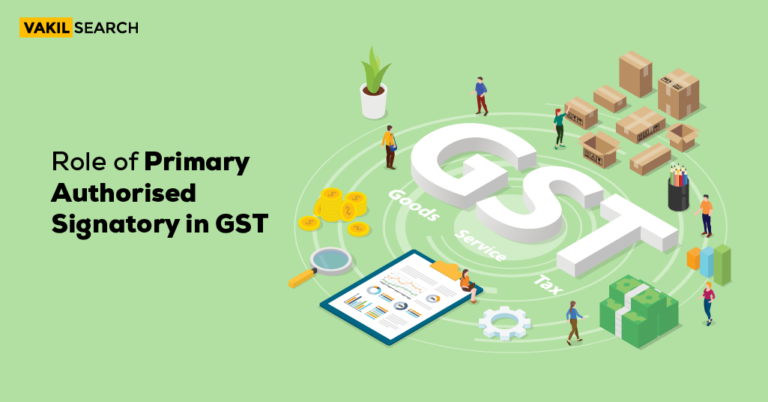Did you know that while filing your GST you can claim a refund from the government? Are you intrigued? This article will show you how you can do this.
The concept of a progressive tax structure, where individuals with higher incomes pay a greater percentage of taxes, is a fundamental principle in many modern tax systems. However, there is an alternative taxation phenomenon known as the inverted tax structure, which flips this conventional approach on its head.
In an inverted tax structure, individuals with lower incomes bear a larger tax burden relative to their higher-income counterparts. This article aims to explore the implications and analysis of such a tax system.
When the Goods and Services Tax (GST) was introduced, it subsumed within it many central and state-level levies in the nature of indirect taxation. GST’s introduction aims to simplify the tax regime, improving logistics and compliances.
However, GST comes with its set of specific issues, one of which is the input tax credit refund. In this post, we assess what is an inverted input tax credit refund, situations leading to its generation and how you can manage taxation liability in this specific scenario. Under GST, the term ‘Inverted Tax Structure’ refers to a situation where the rate of tax on inward supplies (purchases) is more than the rate of tax on outward supplies (sales). In simple terms, the GST rate paid on purchases is more than the GST rate payable on sales.
What is an Inverted Tax Structure?
An inverted tax structure refers to a situation where the tax rate on inputs (raw materials or intermediate goods) is higher than the tax rate on the final product. This disparity can lead to the accumulation of excess input tax credit (ITC) in the hands of taxpayers, adversely affecting cash flows and working capital. To address this issue, refund mechanisms have been established under both the pre-GST and GST regimes.
What Is an Input Tax Credit, and How Does It Work?
An input tax credit is a refund received for the tax paid on inputs, which eventually goes into making the final product that is liable to GST payment. Since the legislative and economic objective behind the introduction of the GST was to do away with double taxation, the credit received as a refund ensures that tax is not paid twice on the same commodity.
Let us assume that a company in India manufactures laptops. Assuming that the raw materials incurred for the manufacture are ₹100 on which GST is levied is taxed at the rate of 20%. So, the input tax paid on acquiring materials would be ₹20. Suppose the company sells this laptop as a product in India for ₹120, on which the GST rate is 5%, so the tax being ₹6 is passed onto the buyer of the laptop (that is 5% of Rs 120).
In such a situation, an input tax credit of ₹20 cannot be adjusted fully against an output tax liability of only ₹6. The credit of ₹14 (20-6) may be adjusted with another output tax liability or be claimed as a refund.
Assuming that the company exported all of its laptops to the United Kingdom. Since the company cannot bill GST onto its foreign customers, under the current export mechanism, the company has to pay ₹6 to the government at the time of export and can later claim a rebate of the same amount.
A balance of ₹14 can be claimed as a refund. In this process, no amount of GST is passed onto the buyer, and the entire tax paid on the purchase of raw materials may be claimed back.
Inverted Tax Structure in the pre-GST Regime
In the pre-GST era, the inverted tax structure primarily affected industries such as textiles, chemicals, and pharmaceuticals. Manufacturers in these sectors faced a higher tax rate on inputs compared to the tax rate applicable to the final product. As a result, they encountered difficulties in utilizing the accumulated input tax credit fully
What Is an Inverted Duty Structure Under GST?
In a regular GST transaction, input products such as sugar, wheat, chocolate powder, and other similar items will be subject to a lower duty than the finished product – packaged cookies. However, there are situations where the GST rate on the inputs may be higher than the rate fixed by the taxation authorities on the final finished product.
In such a situation, there arises a mismatch between a higher outflow of tax paid on input goods and a lower refund received on finished goods. This entails a tax liability on the manufacturer – and hence, is called an ‘inverted input tax credit’ under the Goods and Services Tax.
Consequences of an Inverted Input Tax Credit
In case the accumulated tax credit arises as a consequence of higher tax on inputs (such as non-woven fabrics subject to 12% duty) than the finished product (fabric bag at 5% duty) – the registered person can claim a refund of the accumulated input tax credit, at the end of the tax period.
Pre-Amendment Refund Formula
Prior to the amendment in the refund mechanism, taxpayers faced challenges in obtaining refunds for the accumulated ITC.
During the period before the implementation of the Goods and Services Tax (GST), t the import duty imposed on the raw materials used in the production of finished goods was higher than the import duty levied on the finished goods themselves.
| Maximum Amount of Refund = {(Turnover of Reverse-rated Supply of Goods and Services) x Net ITC / Adjusted Total Turnover} – Tax Payable on such reversed nominal supply of goods and services. |
The formula for calculating the refund was complex and often led to delays and disputes.
Post-Amendment Refund Formula
With the introduction of the amended refund formula, the process for claiming refunds in case of an inverted tax structure became more streamlined. The revised formula accounted for the actual tax liability on the inverted-rated supply, providing relief to taxpayers.
| Maximum Amount of Refund = {(Turnover of Reversed Assessed Supply of Goods and Services) x Net ITC / Adjusted Total Turnover} – {Tax Payable on such Reversed Assessed Supply of Goods and Services x (Net ITC / ITC utilized on inputs and input services)} |
How Can a Person or a Business Claim Such a Refund – Practical Aspects?
- Only a registered taxpayer under the GST database can file for a refund
- The registered person needs to file the refund claim with the jurisdictional tax authority to which the taxpayer has been assigned as per the administrative order issued by the chief commissioner of central tax and commissioner of state tax
- The tax refund claim in such a scenario will be admissible only if the same has been filed within two years from the relevant date
- Rule 89(2)(h) of CGST Rules, 2017 stipulates that a refund claim on account of accumulated input tax credit (where such accumulation is on account of inverted duty structure) has to be accompanied by a statement containing the number and date of invoices received and issued during a tax period
- The formula for calculation of maximum refund amount = (turnover of inverted rated supply of goods and services X net input tax credit/adjusted total turnover) – tax payable on such inverted rated supply of goods and services
- In case there is a mix of inputs – some of which are higher than the final rate and some are lower, the entire gamut of inputs will be considered for calculation of refund, not just those that are chargeable to a higher duty.
- Form RFD 01A has to be filed with relevant supporting documentation and can be tracked using the track applications status on the GST Portal
- Since the process is entirely online, the tax department usually processes the refund online and remits the same.
Non-Availability of Input Tax Credit Refund Due to Inverted Structure
In the following circumstances, despite higher tax on inputs, no claim can be entertained:
- In the case of input services, as services being amenable to varied pricing are not covered under the inverted tax refund restructure
- Capital goods are outside the purview of “inputs”, as the tax department considers only consumables going into the final product as inputs for determining the refund
- Nil rated or fully exempt supplies of goods or services are also outside the realm of an inverted tax refund of input tax credit
- Despite meeting the above three conditions, a claim may be denied if it pertains to items specifically mentioned in notification no. 05/2017- central tax (rate) dated 28.06.2017 that includes items such as woven cotton, corduroy, railway equipment, etc.
Inverted Tax Structure under the GST Regime
Under the GST registration regime, the issue of an inverted tax structure still persists for certain sectors. While GST aimed to streamline the tax structure, the mismatch in tax rates on inputs and outputs continues to pose challenges. However, the GST framework introduced specific legal provisions to address the issue and facilitate refunds for taxpayers.
Legal Provisions for Claiming Inverted Duty Refund
To claim a refund for the accumulated ITC due to an inverted tax structure, taxpayers need to adhere to the legal provisions specified under the GST Act. These provisions outline the eligibility criteria, documentation requirements, and procedural aspects of claiming the refund.
Refund in Case of Inverted Tax Structure under GST
The GST regime allows taxpayers to claim refunds for the excess ITC accumulated due to an inverted tax structure. The refund mechanism ensures that taxpayers can recover the unutilized credit to ease their financial burden.
Maximum Amount of Refund, Formula, and Terms
| Maximum Refund Amount = (Turnover of inverted rated supply of goods and services X Net input tax credit /Adjusted total turnover) – Tax payable on such inverted rated supply of goods and services |
The maximum amount of refund that can be claimed under an inverted tax structure is subject to certain restrictions and conditions. The formula for calculating the refund considers the eligible ITC and the actual tax liability on the inverted-rated supply. Understanding these terms is crucial to determine the refund entitlement accurately.
Procedure for Filing Inverted Duty Refund
Taxpayers seeking a refund for the inverted duty structure must follow a prescribed procedure. This involves submitting the requisite forms, along with supporting documents, to the designated authorities within the specified time limits. Adhering to the procedural requirements is crucial to avoid any delays or rejections in the refund process.
How to Claim a Refund for Unused ITC?
Apart from the inverted tax structure, taxpayers can also claim refunds for any unused ITC accumulated due to zero-rated supplies or inverted-rated supplies. The procedure for claiming a refund of unused ITC involves filing the relevant forms and fulfilling the necessary conditions stipulated by the GST authorities.
Various Forms Used in Inverted Duty Refund
The GST regime has introduced specific forms for claiming refunds under an inverted tax structure. These forms include Form GST RFD-01A, Form GST RFD-01B, and Form GST RFD-01C. Understanding the purpose and correct usage of these forms is vital to ensure a smooth refund application process.
Issues for Claiming the Inverted Duty Refund
While the refund mechanism for an inverted tax structure has been improved, certain challenges and contentions persist. Issues such as delays in processing, rejection of claims, and disputes related to the refund formula require careful consideration and expert guidance.
Track the Filed Refund Application
To facilitate transparency and enable taxpayers to track the progress of their refund applications, the GST portal provides an online facility to monitor the filed refund application. Regularly monitoring the status can help taxpayers stay informed and take appropriate action if required.
Issues & Contentions
Despite the legal provisions in place, the interpretation and implementation of refund provisions for an inverted tax structure have given rise to various issues and contentions. These may include disputes over the calculation of eligible ITC, the time limit for filing refund applications, and the treatment of ancillary costs. Seeking expert advice can help resolve such issues effectively.
The existence of an inverted tax structure undermines the principles of fairness and hampers economic progress. It is imperative for governments and policymakers to take proactive steps to rectify this issue through progressive tax reforms, enhanced tax system efficiency, and complementary policies that foster social and economic inclusivity. Only by working towards a fairer and more equitable tax system can we build a society that benefits all its members and promotes sustainable economic growth.
When the government rolled out GST: https://www.gst.gov.in/, with the objective of One Nation, One Tax, GST created waves in almost every industry because of the ambiguities and apprehensions around switching over to a new regime. There is no denying that there are glitches in the processing of input credits and snags in the technical process that may add to the difficulties, albeit with the addition of provisions that entail a 6% interest payment if the refund is not settled within 60 days. The refund process, however, is entirely online with minimum interface with taxation authorities.
If you are a business owner and don’t have the bandwidth to manage this month-on-month, then reach out to the Vakilsearch team. Our in-house experts will ensure that your business journey, which includes monthly filing of GST, is seamless.
FAQs
What is inverted tax structure under GST?
An inverted tax structure under the Goods and Services Tax (GST) refers to a scenario where the tax rate on inputs (raw materials or intermediate goods) is higher than the tax rate on the final product. This discrepancy can result in the accumulation of excess input tax credit (ITC) in the hands of taxpayers.
What is inverted tax structure in GST Upsc?
For UPSC (Union Public Service Commission) exam purposes, an inverted tax structure in GST refers to a situation where the tax rate on inputs is higher than the tax rate on the output. This disparity can create challenges for businesses in terms of cash flows and working capital management.
How do I claim GST refund due to inverted duty structure?
To claim a GST refund due to an inverted duty structure, you need to follow the prescribed procedure outlined by the GST authorities. This typically involves filing Form GST RFD-01A, along with supporting documents that demonstrate the excess input tax credit accumulation. The refund application should be submitted within the specified time limits to the designated GST authorities.
What is the formula of inverted tax structure?
The formula for calculating the refund amount in the case of an inverted tax structure is typically based on the difference between the eligible input tax credit and the actual tax liability on the inverted-rated supplies. The specific formula may vary depending on the regulations and provisions set forth by the GST authorities.
What does inverted structure mean?
An inverted tax structure refers to a situation in which the tax rate imposed on inputs is higher than the tax rate applied to the final product or output. This can lead to the accumulation of excess input tax credit and may cause challenges in utilizing the credit effectively, impacting cash flows and working capital.
Is case law on inverted duty structure under GST?
There are no specific landmark case laws on the inverted duty structure under GST. However, it is important to note that the interpretation and application of tax laws can evolve over time, and new case laws may emerge in the future.
What are the 4 structures of GST?
The GST tax structure comprises of:
✷ Central Goods and Services Tax (CGST)
✷ State Goods and Services Tax (SGST)
✷ Integrated Goods and Services Tax (IGST)
✷ Union Territory Goods and Services Tax (UTGST).
What are the 4 Rate Structure of GST?
A zero rate, a lower rate, a standard rate, and a higher rate are the four distinct rates that make up the four-tiered tax structure.
What are types of GST structure?
The types of GST structures primarily refer to the tax rates and their application under the GST regime. The main types include:
✷ Multiple Tax Rate Structure: Involves different tax rates for different categories of goods and services.
✷ Composite Tax Rate Structure: Applicable to specific sectors or compositions, such as the composition scheme for small businesses.
✷ Nil Tax Rate Structure: Exemptions and zero-rated supplies that do not attract any GST liability.
✷ Special Rate Structures: Applicable to specific goods or services, such as luxury goods or items attracting a higher tax rate.










